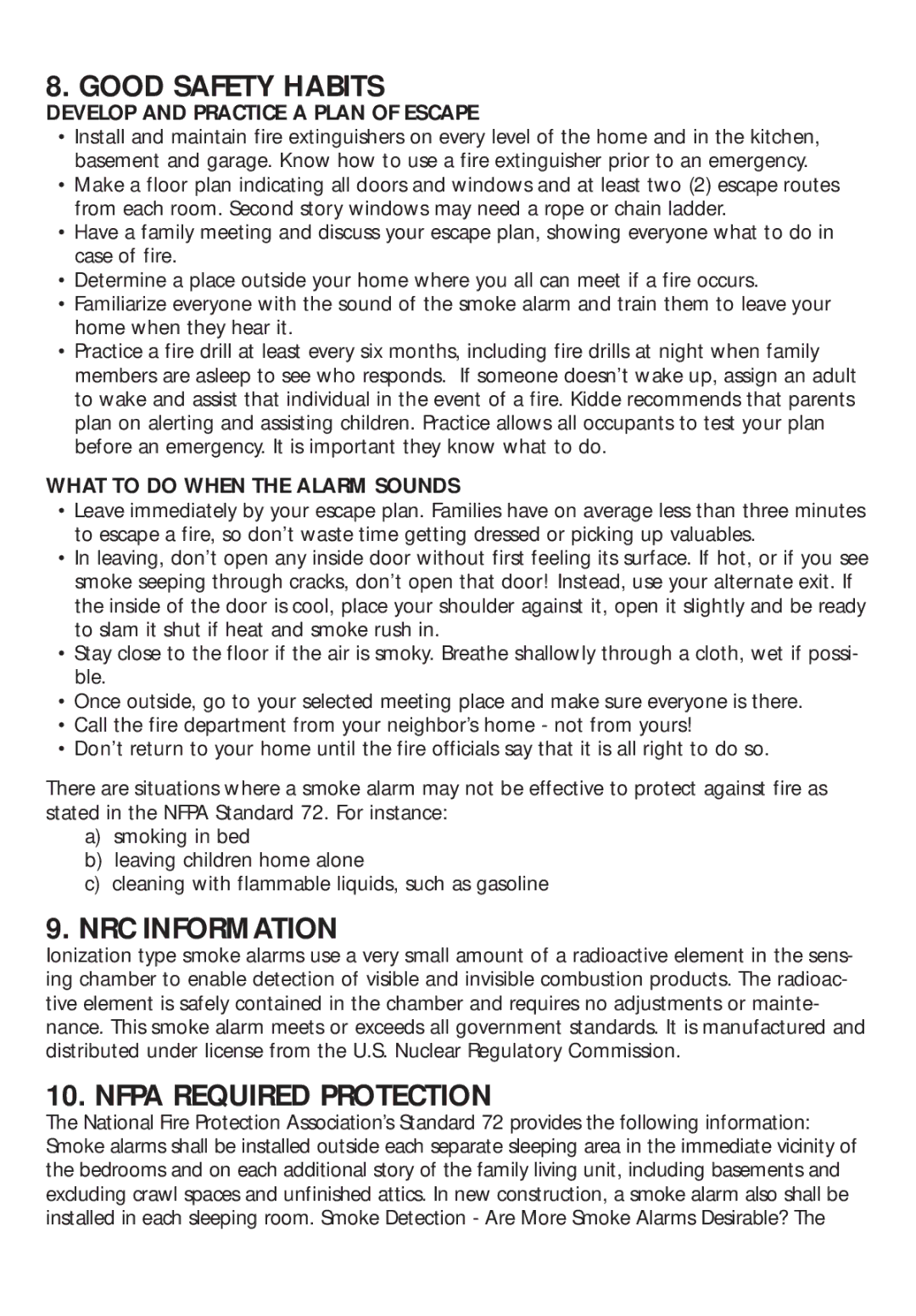8. GOOD SAFETY HABITS
DEVELOP AND PRACTICE A PLAN OF ESCAPE
•Install and maintain fire extinguishers on every level of the home and in the kitchen, basement and garage. Know how to use a fire extinguisher prior to an emergency.
•Make a floor plan indicating all doors and windows and at least two (2) escape routes from each room. Second story windows may need a rope or chain ladder.
•Have a family meeting and discuss your escape plan, showing everyone what to do in case of fire.
•Determine a place outside your home where you all can meet if a fire occurs.
•Familiarize everyone with the sound of the smoke alarm and train them to leave your home when they hear it.
•Practice a fire drill at least every six months, including fire drills at night when family members are asleep to see who responds. If someone doesn’t wake up, assign an adult to wake and assist that individual in the event of a fire. Kidde recommends that parents plan on alerting and assisting children. Practice allows all occupants to test your plan before an emergency. It is important they know what to do.
WHAT TO DO WHEN THE ALARM SOUNDS
•Leave immediately by your escape plan. Families have on average less than three minutes to escape a fire, so don’t waste time getting dressed or picking up valuables.
•In leaving, don’t open any inside door without first feeling its surface. If hot, or if you see smoke seeping through cracks, don’t open that door! Instead, use your alternate exit. If the inside of the door is cool, place your shoulder against it, open it slightly and be ready to slam it shut if heat and smoke rush in.
•Stay close to the floor if the air is smoky. Breathe shallowly through a cloth, wet if possi- ble.
•Once outside, go to your selected meeting place and make sure everyone is there.
•Call the fire department from your neighbor’s home - not from yours!
•Don’t return to your home until the fire officials say that it is all right to do so.
There are situations where a smoke alarm may not be effective to protect against fire as stated in the NFPA Standard 72. For instance:
a)smoking in bed
b)leaving children home alone
c)cleaning with flammable liquids, such as gasoline
9.NRC INFORMATION
Ionization type smoke alarms use a very small amount of a radioactive element in the sens- ing chamber to enable detection of visible and invisible combustion products. The radioac- tive element is safely contained in the chamber and requires no adjustments or mainte- nance. This smoke alarm meets or exceeds all government standards. It is manufactured and distributed under license from the U.S. Nuclear Regulatory Commission.
10. NFPA REQUIRED PROTECTION
The National Fire Protection Association’s Standard 72 provides the following information: Smoke alarms shall be installed outside each separate sleeping area in the immediate vicinity of the bedrooms and on each additional story of the family living unit, including basements and excluding crawl spaces and unfinished attics. In new construction, a smoke alarm also shall be installed in each sleeping room. Smoke Detection - Are More Smoke Alarms Desirable? The
